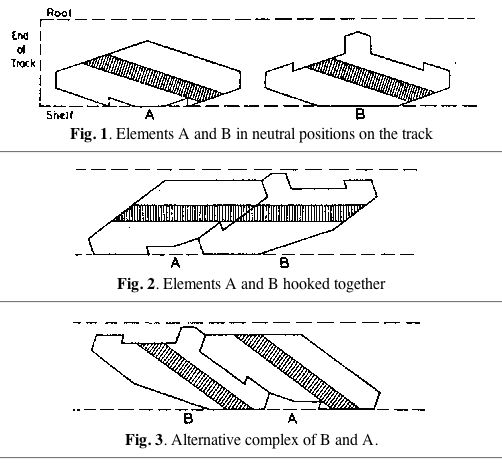Self-Replicating Machines
Understanding to replicate
This week, we had to "model the operation of a self-reproducing machine, defined however you choose". Self-replicating machines are such a beautifully complex concept to me that even after doing all of the readings , I was not able to fully understand what little old me could cad, other than another RepRap machine. With the help of Morris (and a more friendly explanation by Chrisantha Fernando, I was able to understand the concepts in the Penrose reading, Mechanics of Self-Reproduction L.S. Penrose; Annals of Human Genetics; Volume 23, Issue 1, pages 59-72, September 1958 so that I could model my own self-replacating mechanism using his diagram, below:
 .
.
I went ahead and cut out my own small prototype seen below to think of how the animation in the Penrose tube would actually work.

Once imagined, I took to Solidworks to animate his design of the A-B self-replicating piece. First, I cadded parts A and B, respectively:
And then took to assemble the parts within a track. Though I first attempted to model the parts within a tube, as is referenced in the reading, it proved much harder to constrain the pieces inside the tube, so I made a flat insert on a track. Using SolidWorks' features to move the component with "Collision Detection" and "Physical Dynamics" I was able to produce the animation above depicting how a certain input, the A-B parts, can move other inputs, into the same configuration.